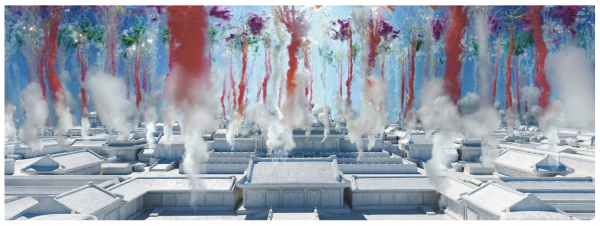
Cai Guo-Qiang is probably best known for his gunpowder paintings and explosive artworks, most notably, Sky Ladder, which was the subject of the 2016 Netflix documentary directed by Kevin Macdonald.
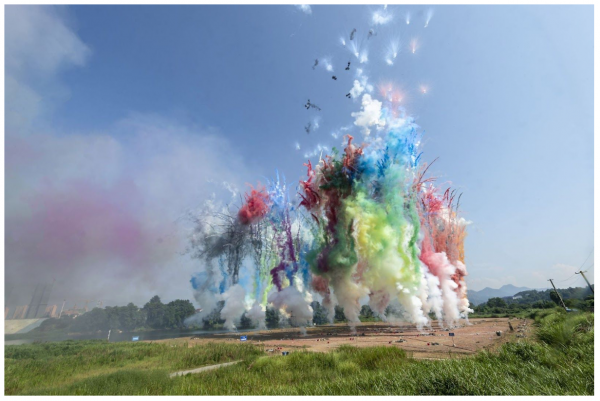
Now the New York-based Chinese artist has debuted ‘Sleepwalking in the Forbidden City’ as part of Odyssey and Homecoming, a major exhibition at the Palace Museum in Beijing, which will run until 5 February 2021.
Inspired by the firework displays that would have historically taken place in the Forbidden City to mark the Lunar New Year, it’s his first-ever virtual reality artwork, which imagines a spectacular daytime fireworks ceremony of dreamlike proportions.
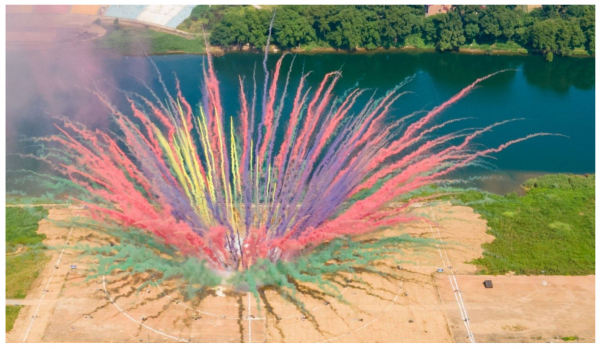
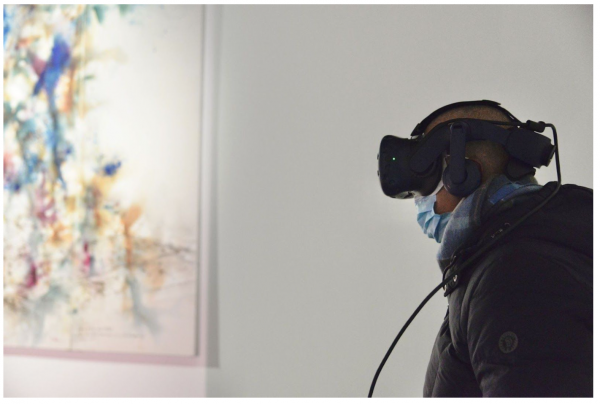
Donning a VR headset, we’ll be able to watch the five-minute display unfold over four chapters, beginning with gold, silver and red fireworks, which will ignite from all corners of the historic site. Moving from sparking strands of coloured smoke to sunrise views over the city’s layered rooftops, the piece will conclude with an explosive finale as the coloured smoke and pigments dissipate and fall through the sky, transforming our surroundings into a remarkable three-dimensional gunpowder painting.
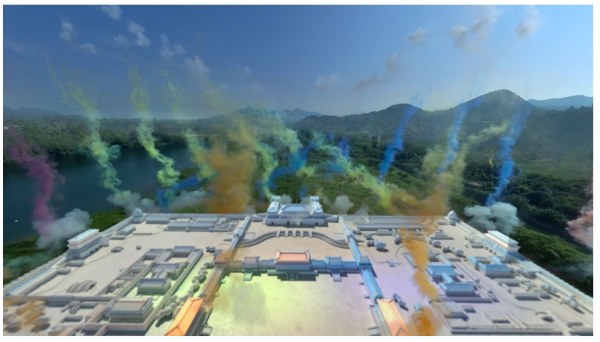
Cai Guo-Qiang began working with real gunpowder in the 1980s, yet this latest experiment transforms the ancient medium into something we can only witness in virtual reality. How does the installation in the exhibition work? It comprises three elements: a large-scale alabaster model of the Forbidden City, which took five months to build and was created in collaboration with craftsmen from the artist’s hometown; a richly layered gunpowder drawing and a VR film, which brings all these pieces together.
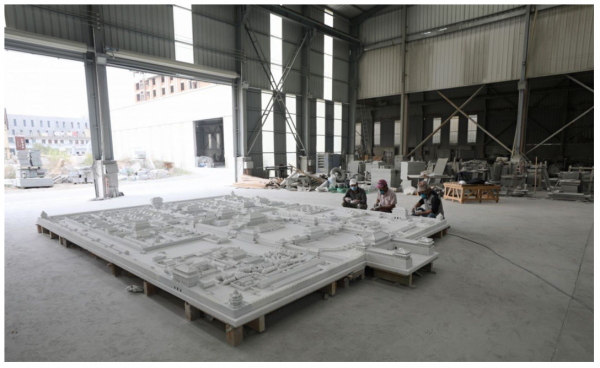
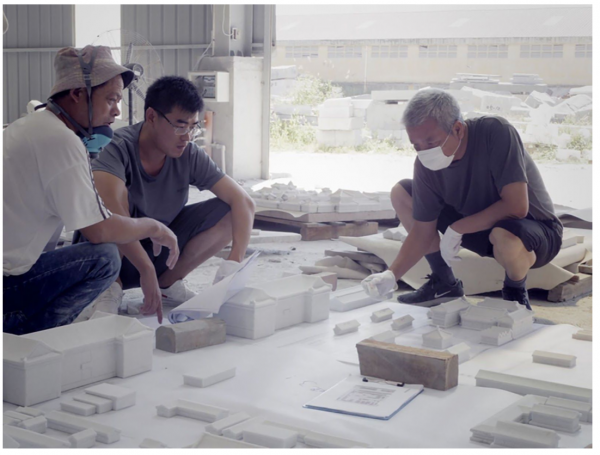
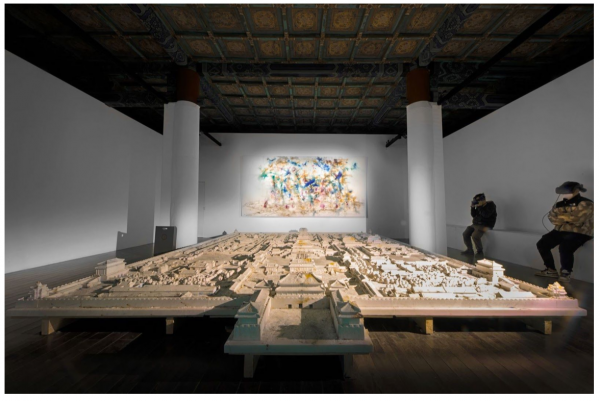
For the film, Cai Guo-Qiang created a full-scale, real-life fireworks ceremony by the Liuyang River, designed to be viewed from multiple angles but without any audience. Through a unique production process, which incorporates 3D scanning and modelling, 360-degree filming, and CG technologies, he was able to create a virtual world of his signature fireworks.
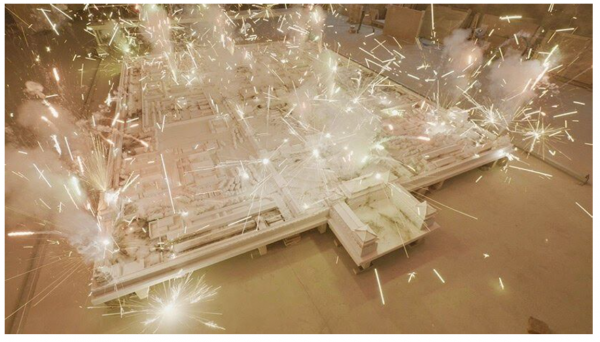
“It was inspired by the traditional principles of ’round sky and square earth’ and Wuxing, the Five Elements,” Cai Guo-Qiang explains. “The work highlights traditional Chinese aesthetics and the bold spirit of ‘the world is mine’ felt within the Forbidden City, and expresses my thoughts while ‘sleepwalking’ back to that chapter of its history. It’s my first-time using VR as an artistic medium, and I hope to destabilise the sleek and flawless aesthetics commonly associated with works created by high technology and to explore its capacity to evoke raw emotions. Ultimately, through the immersive 360-degree fireworks, I hope to create a channel for audiences to have a dialogue with a broader space and time.”
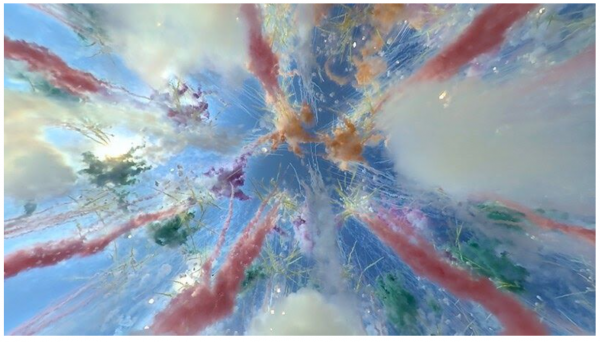
‘Sleepwalking in the Forbidden City’ by Cai Guo-Qiang was created in partnership with HTC VIVE Arts. It is part of Odyssey and Homecoming, a major exhibition at the Palace Museum in Beijing, curated by Sir Simon Schama, which will run until 5 February 2021.
